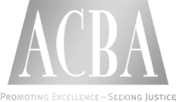Title IX of the Education Amendments of 1972 is a federal law that prohibits sex discrimination in educational institutions receiving federal funding. To ensure compliance with Title IX, colleges and universities must conduct regular compliance reviews. This page aims to explain the importance of conducting these reviews, outline the key elements of a Title IX compliance review, and provide guidance on how colleges and universities can effectively fulfill their obligations under Title IX.
Importance of Title IX Compliance Reviews:
- Legal Compliance: Conducting Title IX compliance reviews is essential to ensure that educational institutions meet their legal obligations under the law. Regular reviews help identify any areas of non-compliance and allow institutions to take corrective actions promptly.
- Protection of Students’ Rights: Compliance reviews ensure that educational institutions provide a safe and nondiscriminatory environment for all students. By identifying and addressing potential violations, colleges and universities can protect students’ rights and promote equal access to educational opportunities.
- Risk Mitigation: Compliance reviews help institutions mitigate the risk of Title IX violations and associated legal consequences. By proactively assessing their compliance efforts, institutions can identify potential areas of concern and take preventive measures to address them.
- Reputation and Public Perception: Demonstrating a commitment to Title IX compliance through regular reviews enhances an institution’s reputation and public perception. It sends a message to students, parents, and the community that the institution takes its responsibility seriously and prioritizes the well-being of its students.
Key Elements of a Title IX Compliance Review:
- Policy and Procedure Evaluation: Reviewing institutional policies and procedures related to Title IX is a crucial aspect of compliance reviews. This includes assessing the clarity, effectiveness, and accessibility of the policies, as well as evaluating whether they align with current legal requirements and best practices.
- Training and Education Assessment: Evaluating the institution’s training programs for students, faculty, and staff on Title IX rights and responsibilities is essential. Compliance reviews should assess the quality, frequency, and comprehensiveness of the training, ensuring that individuals understand their obligations and know how to report violations.
- Grievance Procedures and Response Mechanisms: Compliance reviews should examine the institution’s grievance procedures and response mechanisms for addressing Title IX complaints. This includes evaluating the timeliness, impartiality, and effectiveness of the investigation and adjudication processes.
- Data Collection and Reporting: Assessing the institution’s data collection practices related to Title IX incidents is important. Compliance reviews should evaluate the accuracy, completeness, and confidentiality of the data, as well as the institution’s reporting obligations to regulatory authorities.
- Climate and Culture Assessment: Evaluating the institutional climate and culture is crucial in understanding whether the educational environment is free from sex discrimination. Compliance reviews can include surveys, focus groups, and interviews to gather information about students’ experiences and perceptions regarding Title IX compliance.
Guidance for Conducting Title IX Compliance Reviews:
- Engage Qualified Professionals: It is advisable to engage Title IX defense lawyers or advisors with expertise in conducting compliance reviews. These professionals can provide guidance on the process, ensure impartiality, and offer legal insights to help institutions meet their obligations.
- Establish Clear Review Protocols: Develop clear protocols and guidelines for conducting compliance reviews, outlining the scope, objectives, and methodologies. These protocols should address confidentiality, conflict of interest, and reporting mechanisms.
- Collect Comprehensive Data: Gather comprehensive data on the institution’s Title IX efforts, including policies, training materials, investigation reports, and incident data. This data will serve as the foundation for evaluating compliance and identifying areas for improvement.
- Conduct Thorough Analysis: Conduct a thorough analysis of the collected data, identifying any patterns or trends that may indicate areas of non-compliance or potential vulnerabilities. This analysis should involve a multidisciplinary team, including legal, educational, and administrative professionals.
- Develop Action Plans: Based on the findings of the compliance review, develop action plans to address areas of non-compliance or improvement. These plans should outline specific steps, timelines, and responsibilities for implementing changes and monitoring progress.
- Ongoing Monitoring and Review: Title IX compliance is an ongoing process. Institutions should establish mechanisms for monitoring and reviewing their compliance efforts regularly. This includes periodic reassessment of policies, training programs, and response procedures to ensure ongoing compliance with evolving legal requirements.
Title IX compliance reviews are essential for colleges and universities to fulfill their obligations under the law and provide a safe and nondiscriminatory educational environment. By conducting comprehensive reviews, institutions can identify areas of non-compliance, mitigate risks, and protect the rights of their students. Engaging qualified Title IX defense lawyers or advisors can provide expertise and guidance throughout the compliance review process. By prioritizing Title IX compliance and addressing any identified issues proactively, educational institutions can promote equal access to education and foster a culture of inclusivity and respect.











